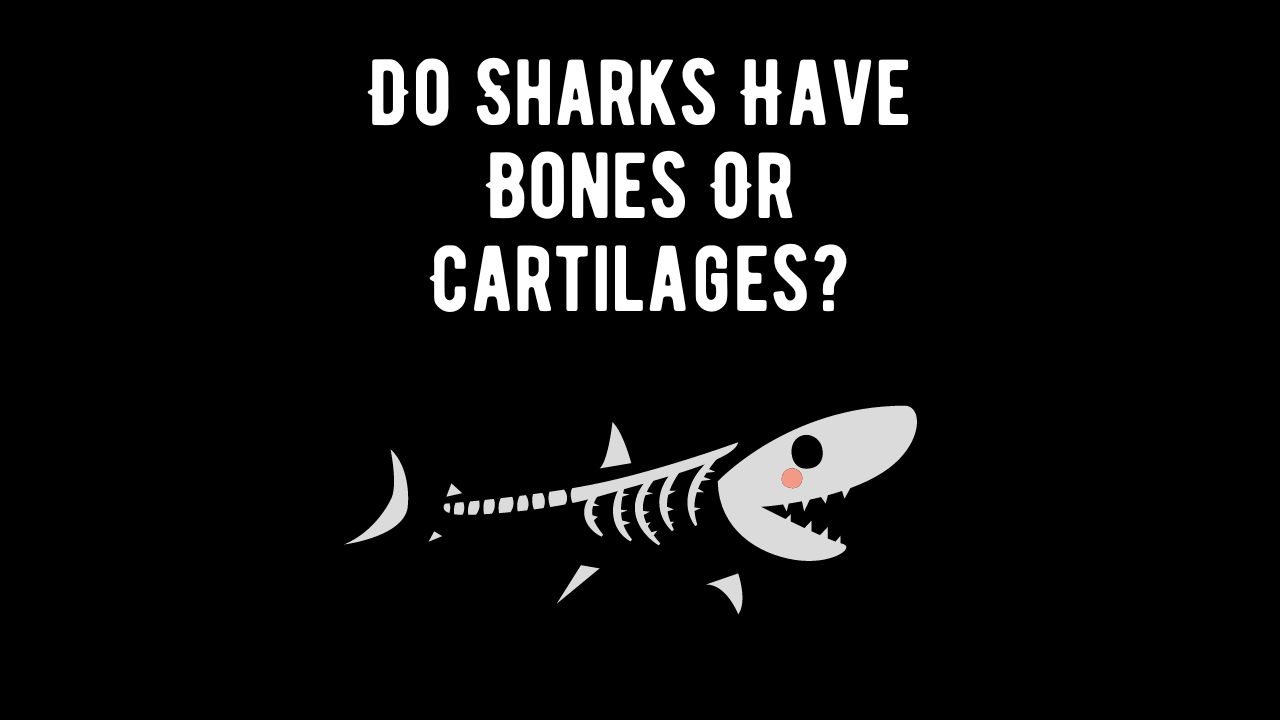
Sharks have skeletons made of cartilage rather than bones. Cartilage is a flexible and lightweight tissue that provides structural support. This cartilaginous skeleton is a distinguishing feature of sharks and other members of the class Chondrichthyes, which includes rays, skates, and chimaeras.
In contrast to bony fish and mammals, sharks lack true bones in their skeletons. Their cartilaginous skeletons are advantageous for life in the aquatic environment. The flexibility of cartilage allows sharks to be highly maneuverable in the water, aiding in their ability to navigate, swim, and capture prey efficiently.
One notable feature of cartilaginous skeletons is that they do not fossilize as easily as bones, making it challenging for scientists to find well-preserved shark fossils. Despite this, sharks have been present on Earth for hundreds of millions of years, and their cartilaginous skeletons have proven to be well-suited to their role as apex predators in marine ecosystems.
The Skeleton Secrets of Sharks: Cartilage vs. Bones
I. The Choice of Cartilage
1. Cartilage Basics:
- Cartilage is a flexible, lightweight connective tissue that provides structural support without the weight and rigidity of bone.
- Sharks are not the only animals with cartilaginous skeletons, but their reliance on cartilage is a distinctive feature.
2. Evolutionary Heritage:
- The preference for cartilage is deeply rooted in the evolutionary history of sharks, dating back millions of years.
- Understanding this evolutionary choice sheds light on the success and adaptability of shark species.
II. Anatomy of Shark Cartilage
1. Cartilage Components:
- Shark cartilage is composed of cells called chondrocytes embedded in a matrix of collagen fibers and proteoglycans.
- This composition gives cartilage its unique combination of flexibility and strength.
2. Chondrichthyan Connection:
- Chondrichthyan is the class that includes cartilaginous fish, such as sharks, rays, and skates.
- The cartilaginous nature of their skeletons is a defining characteristic of this group.
III. Advantages of Cartilage in Sharks
1. Flexibility in Movement:
- Cartilage provides sharks with exceptional flexibility in movement, allowing them to navigate the water with agility.
- This flexibility is crucial for hunting, evading predators, and exploring their oceanic environments.
2. Lightweight Design:
- The lightweight nature of cartilage is advantageous for sharks, enabling them to be more buoyant in water.
- Buoyancy is a key factor in the energy efficiency and maneuverability of these marine predators.
IV. Bone Elements in Sharks
1. Calcified Cartilage:
- While sharks predominantly have cartilaginous skeletons, some species exhibit calcified cartilage in certain regions.
- Calcified cartilage contains minerals like calcium, providing additional rigidity to specific parts of the skeleton.
2. Dermal Denticles:
- Dermal denticles, often referred to as “skin teeth,” are tooth-like structures embedded in the skin.
- These denticles contain a combination of dentin and enameloid, blurring the line between cartilage and bone.
V. Evolutionary History of Shark Skeletons
1. Ancient Beginnings:
- Sharks have a long evolutionary history, dating back hundreds of millions of years.
- Fossil evidence reveals the gradual development and optimization of cartilaginous skeletons in early shark ancestors.
2. Adaptations for Survival:
- The evolutionary path of sharks led to the development of unique adaptations, including the cartilaginous skeleton, which contributed to their survival as apex predators.
VI. Bone and Cartilage in Modern Shark Species
1. Diversity in Skeletal Composition:
- Modern shark species exhibit diversity in their skeletal composition.
- Some species have skeletons consisting almost entirely of cartilage, while others incorporate calcified cartilage in specific areas.
2. Functional Specialization:
- The variation in skeletal composition reflects functional specialization, with different species adapting to specific ecological niches and hunting strategies.
VII. Challenges of a Cartilaginous Skeleton
1. Limited Fossilization:
- The cartilaginous nature of shark skeletons poses challenges for fossilization.
- The preservation of ancient shark fossils is often limited compared to the more durable bones of other vertebrates.
2. Regeneration and Healing:
- Cartilage has limited regenerative capacity compared to bone.
- Understanding how sharks cope with injuries and damage to their cartilage provides insights into their remarkable healing abilities.
VIII. Shark Cartilage and Human Health
1. Medical Applications:
- Shark cartilage has been explored for potential medical applications, including the treatment of arthritis and certain cancers.
- Research into the properties of shark cartilage may lead to advancements in human medicine.
2. Ethical Considerations:
- The use of shark cartilage in medical research raises ethical concerns, prompting discussions about sustainable alternatives and conservation efforts.
IX. Conservation Implications
1. Vulnerability to Overfishing:
- Sharks, with their slow growth and reproductive rates, are vulnerable to overfishing.
- Conservation efforts must consider the impact of overfishing on shark populations, including those with cartilaginous skeletons.
2. Preserving Biodiversity:
- Understanding the importance of shark skeletons, whether cartilaginous or calcified, underscores the need for biodiversity conservation.
- Preserving diverse shark species contributes to the health and resilience of marine ecosystems.
X. Conclusion
In conclusion, the choice of a cartilaginous skeleton by sharks is a testament to the evolutionary adaptations that have allowed these creatures to thrive in Earth’s oceans for millions of years. The advantages of flexibility, buoyancy, and adaptability have shaped the predatory prowess of sharks, making them apex predators with a unique place in the marine world. As we unravel the mysteries of shark skeletons, we gain not only a deeper understanding of their evolutionary history but also insights into the delicate balance of life in our oceans. From the ancient beginnings to the diverse array of modern species, sharks continue to inspire awe and fascination as they navigate the underwater realm with their remarkable cartilaginous skeletons.
Are Shark Teeth Bone or Cartilage?
- Shark teeth are not made of bone; they are composed of dentin, a calcified tissue similar to what forms the bulk of human teeth. The outer layer of shark teeth is covered in enamel, which is even harder than human enamel. Shark teeth are continuously replaced throughout their lives, with new teeth growing in rows behind the functional ones. This continuous replacement is a key adaptation that ensures sharks always have sharp, efficient teeth for hunting and feeding.
Which Fish Has No Bones?
- Hagfish are an example of fish that lack true bones. Hagfish belong to a primitive group of jawless fish called Myxini. They have cartilaginous skeletons, and their bodies are primarily composed of cartilage. While not all fish lack bones, hagfish are an interesting exception, and their boneless nature contributes to their unique evolutionary lineage.
Do Shark Whales Have Bones?
- It seems there might be a slight confusion in the question. Sharks and whales are distinct groups of marine animals. Sharks, as mentioned earlier, have cartilaginous skeletons. Whales, on the other hand, are mammals and have bones in their skeletons. The bones of whales are adapted for a life in the water, with streamlined bodies and limbs modified into flippers.
Are Sharks 100% Cartilage?
- While sharks have a predominantly cartilaginous skeleton, they are not 100% cartilage. Some parts of a shark’s body, such as the teeth, vertebrae, and parts of the skull, are cartilaginous. However, sharks also have some mineralized tissues within their cartilage, providing additional strength and support. It’s essential to note that the degree of calcification can vary among different shark species.
Are Shark Teeth Bone or Cartilage?
- As mentioned earlier, shark teeth are not made of bone. They are primarily composed of dentin, covered by enamel. The continuous replacement of shark teeth is a unique feature that sets them apart from most other animals, including humans, whose teeth have a limited capacity for regeneration.
Is a Shark’s Jaw Made of Bone?
- No, a shark’s jaw is not made of bone; it is composed of cartilage. The cartilaginous nature of the jaw contributes to its flexibility and durability. The ability of a shark’s jaw to move independently from the skull allows it to extend forward during feeding, aiding in the capture and consumption of prey.
Summary
Sharks possess a cartilaginous skeleton, and their teeth and jaws are also primarily made of cartilage. This cartilaginous structure is a key adaptation that makes sharks well-suited for their aquatic lifestyles.






